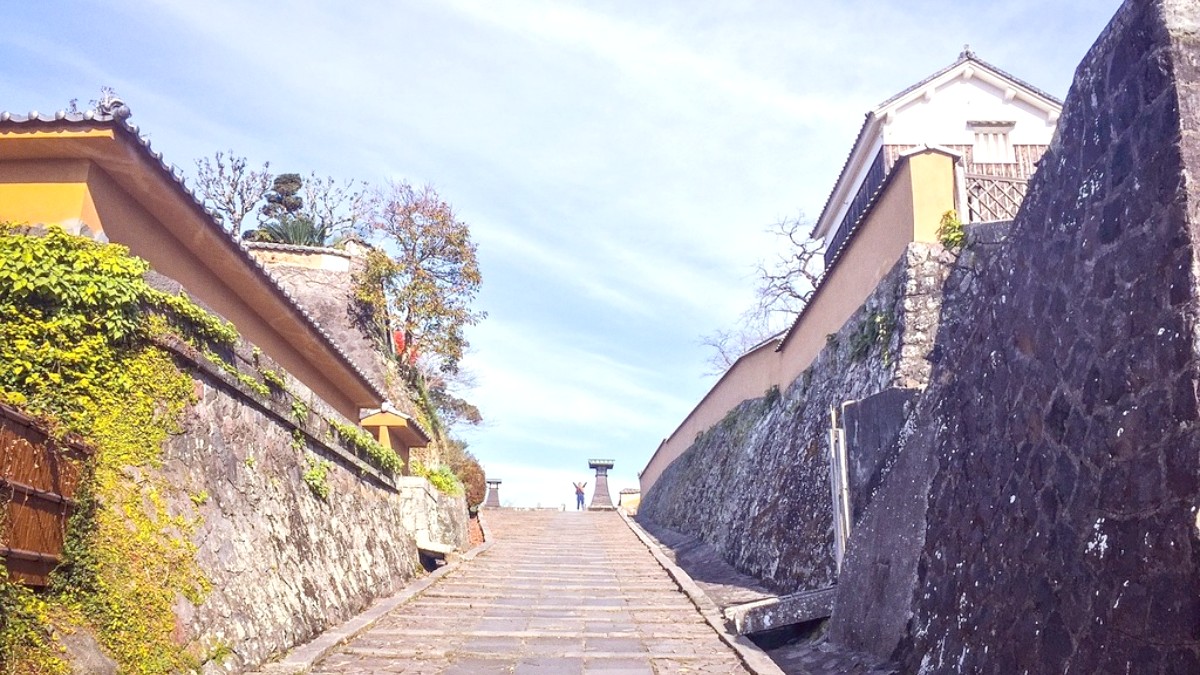
Kyushu, Japan
Pack light to medium layers. Long-sleeved shirts, light sweaters, and a jacket or cardigan work well for varying temperatures. A light waterproof jacket or umbrella proves useful for unexpected spring showers. A packable rain jacket is useful for sudden weather changes.
Choose lightweight, breathable fabrics like cotton or linen. Pack shorts, t-shirts, and light dresses. Carry a light cardigan or scarf for air-conditioned indoor spaces. Full rain gear is suitable for the rainy season.
Absolutely essential for city exploration. Choose shoes with good arch support for extensive walking.
If exploring volcanic areas around Mount Aso, proper hiking shoes offer necessary grip and support.
Useful for places requiring frequent shoe removal like temples, ryokans, and some restaurants.
Keeping critical documents organized and accessible is a part of travel preparation, offering peace of mind and swift action in unexpected situations.
Japan uses a voltage of 100V. The frequency is 50Hz in eastern Japan (including Tokyo) and 60Hz in western Japan (including Kumamoto). Most modern electronics (laptops, phone chargers, camera chargers) are dual voltage ("Input: 100-240V") and handle variations without a converter. Japan uses Type A (two flat parallel pins) and Type B (less common) plug types. Type A is usually sufficient.
Most modern Smartphones are compatible with Japanese networks (GSM, 3G, 4G LTE, 5G). Your phone should be unlocked by your home carrier before your trip. Portable power banks are useful to keep devices charged; mobile data and navigation apps can quickly drain phone batteries.
Utilize services like Google Drive, Dropbox, or iCloud for backing up photos and digital document copies. This keeps your memories and important papers safe.
For redundant backups, consider bringing an External hard drive or USB stick, especially for high-volume photography.
Set strong PINs or passwords on all devices. Enable remote wipe options if available. Consider a VPN like NordVPN or ExpressVPN for public Wi-Fi safety.
Assemble a Basic first aid kit to handle common minor injuries or ailments. This kit helps you avoid searching for pharmacies when you need relief.
Bring a sufficient supply of all your prescription medications for the entire trip. Keep medications in their original containers with clear prescription labels. Check Japan's specific import restrictions for medications well in advance, as some common medications in other countries are restricted or prohibited.
If exploring trails around Mount Aso or Kikuchi Gorge, proper footwear is essential. Layers of clothing, a water bottle, and snacks are also important.
Most onsen provide basic toiletries, but you might prefer your own specific brands. A small modesty towel is provided, but a larger towel for drying yourself after bathing is useful.
A standard digital camera or your Smartphone camera will capture the sights. You will likely take many photos of Kumamoto Castle, Suizenji Garden, and Aso landscapes.
A few additional items contribute to your comfort during travel and long journeys, especially on train rides, overnight buses, or international flights.
While Japan is very safe, incorporating security items into your packing offers an extra layer of protection.
Refill from safe tap water, reduce plastic waste.
Avoid charges for plastic bags, reduce environmental impact.
Minimize plastic waste from convenience store meals.
Pack versatile Travel gear for comfort and seasonal readiness.
Your packing strategy focuses on versatility and comfort for walking, with considerations for seasonal weather and specific outdoor pursuits like hiking in the Aso region or enjoying hot springs.
Consider what items you might already own and what can be rented or purchased locally to save space and weight.